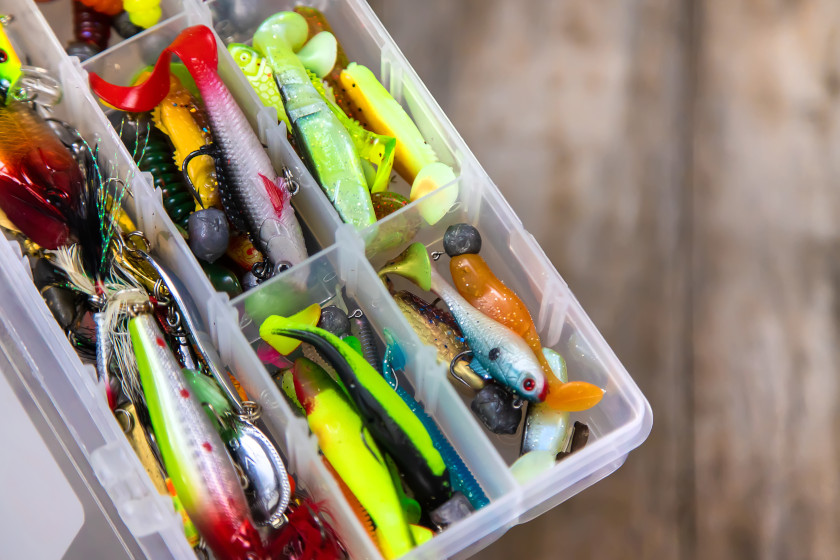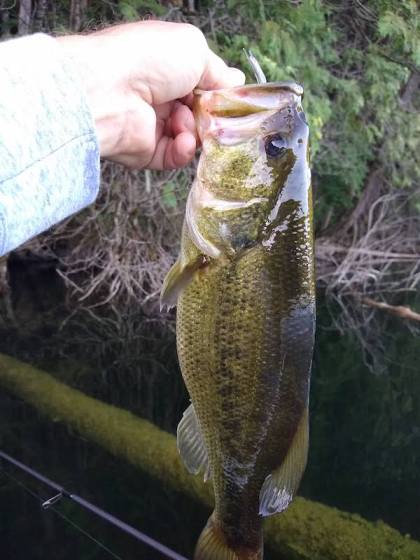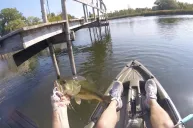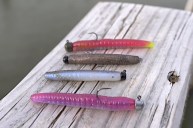Sight fishing is nothing new. I can still remember as far back as the mid-1970s when we would seek out bass that were still on their spawning beds after the statewide season had opened, but it was a little tougher since the regulations meant that spawning bass were completely protected from targeting by anglers. Back then, many states closed their season to coincide with spawning. Once New York came around and allowed bass to be targeted year-round, (in eligible waters) we could find them as they were in a pre-spawn pattern, on their beds, or just after thanks to new rules on using artificial lures and requiring immediate catch and release. Getting back to sight fishing for bass has never been more fun, and thanks to the fisheries biologist community, we now know that it is safe for the fish. Of course, you can catch largemouth and smallmouth bass through sight fishing at all times of the year, it's just that it's more common when the fish are in the shallows during the spawn. No matter when you're targeting them with this method, today we'll go over some of the intricacies of pursuing bass that you spot with your eyes rather than your electronics.
Gear for Sight Fishing Bass

Getty Images: Yana Tatevosian
Sometimes the basics are the best way, and when you are sight fishing for bass that holds quite true. These are the basic things I like to use when the biggest bass have finally left staging areas in deeper water and are finally up on their beds in the springtime.
- Polarized Sunglasses
- Spinning Rod and Reel
- 10-pound Fluorocarbon Line or 20 to 30-pound Braid with a 10-pound Diameter
- Soft Plastic Grubs and Tube Baits in White
- Drab Clothing or even Camo
Tubes and soft plastic grubs are the starting choice for most sight fishermen, but don't discount a lizard or salamander presentation as it causes some extreme anger management problems in early season bass. A bait moving slowly on or near a bass bed can trigger a strike, but when a when a largemouth won't leave her position to attack, (even in defense of her nest) letting a creature bait lay right on her eggs will sometimes do the trick. Don't be afraid to experiment with other lures like Texas rig plastic worms, shallow diving crankbaits, or even swimbaits. Remember that bluegill like to eat bass eggs and fry. Imitating one with your lure can sometimes elicit an aggressive defensive bite where all else fails.
This is one of the best times, if not the best time, to use baits that show up to your own eyes since the fish are acutely aware of their surroundings at this time of the year. White is probably the best choice for bedding bass, but yellow, chartreuse, black/blue, and summer crawfish really stick out as well.
If you plan to fish on the water, (the most effective way) then you need to remember that stealth is still your best friend. A good trolling motor will get you close to fish, but don't forget about your oars or a simple paddle to cut down on sound and motion. As far as rods and reels, there is no specific reason to choose spinning gear over baitcasting, it's just that in my experience it is easier and more fun to finesse your bait near a fish with a spinning rod. I like to use fluorocarbon lines because the water is often clearer in the shallows and this line disappears better than mono or braid.
Many anglers neglect the clothing aspect. You want to make sure that you don't stand out by using bright colors; the only loud thing out there should be your voice when you boat a hog. Finally, there's the secret weapon. Polarized sunglasses have been the norm in fishing since anglers discovered how well they cut down on the glare and make fish stand out like a sore thumb, especially in shallow water.
Cast Long and Slow Down

Craig Raleigh
When you're on the lake, try to keep your distance from key shallow shorelines and use the polarized sunglasses to look for fish near the edges. When you spot them, it's time to quiet down and be cautious. Move slowly with the trolling motor or paddles, avoid splashing as much as possible to get into casting distance. If the water is clear, you might want to hang back a little further than if it is stained. Just because clear water fish often spook faster. If you are fishing from shore, step lightly. You'd be surprised how well the sound of footsteps can carry underwater. It helps if you crouch down as you approach the bank. It simply makes it harder for the bass to see you coming.
Once you have placed yourself into position to target a fish, you're going to have to make sure that you don't spook it. Having it in sight is only the first order of business, now you need to get your bait near the fish without plunking it right on top of the bass. In my experience, the best way to cast is to get your offering into the air beyond the target area and bring it back slowly until it appears to threaten a nest or upset a bass. Don't discount throwing your bait off to the side of the fish, just don't splash a bait right on its head or you're in for a big zero.
Slow down your approach, make sure you are not casting a shadow, and slow the retrieve to a crawl. Sometimes letting the bait lay on a nest for some time is all it takes to elicit a strike. This has the effect of slowly making a spawning bass crazy, thinking that it is a threat to her eggs. Sometimes you'll catch the smaller male fish first, as they seem to be more aggressive in this scenario.
Outside of spawning scenarios, you're going to want to watch the fish's body language closely. They'll give subtle clues to tell you what they are interested in biting. You might see a sudden burst of energy, or a simple, subtle turn that shows their interest is peaked. Sometimes, this may necessitate throwing a few different lures at a stubborn fish until you happen on something they like. Don't be afraid to think outside the box in this scenario. There's a chance a stubborn bass has been caught before on a lure just like what you're throwing. That just means you may need to throw something different they've never seen before.
If there is a more fun way to fish than sight fishing for bass, then please let us in on the secret. Nothing beats watching a big bass swallow up your topwater or jig after a deliberate cast at them. Whether you're a seasoned bass angling veteran or just getting started, sight fishing is something anyone can do, and it makes for fast action.
Please check out my book "The Hunter's Way" from HarperCollins. Be sure to follow my webpage, or on Facebook and YouTube.




